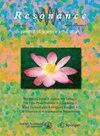Theoretical Exploration of a Process-centered Assessment Model for STEAM Competency Based on Learning Progressions
IF 0.4
Q4 EDUCATION, SCIENTIFIC DISCIPLINES
引用次数: 1
Abstract
본 연구에서는 과정중심 평가에 대한 이론적 모델을 STEAM 교육 맥락에서 핵심역량의 학습발달과정에 근거하여 개발, 제안하였다. 본 연구에서 제안하는 ‘과정-결과를 결합한 모듈 타입(Process-Products Combined Module-type)의 STEAM 평가모델(P2CM STEAM 평가모델)’은 문헌분석을 통해 도출된 것으로, STEAM 수업 맥락에서 핵심역량 학습발달과정에 초점을 둔 모델이다. 의 특징은 STEAM 수업과 평가를 연계하고, 과정평가와 결과평가가 동시에 가능하며, 다양한 STEAM 주제와 수업유형에 실제로 적용 가능한점이다. 은 3개의 축으로 구성되는데, 첫 번째 축(X축)은 STEAM에서 중점을 두어야 할 4C 역량을, 두 번째 축(Y축)은 STEAM 수업유형의 종류와 위계를 나타내며, 세 번째 축은 학습발달 수준인 평가기준을 나타낸다. 에 기반으로 하여 창조기반의 창의역량에 초점을 둔 평가모듈(창의역량×창조기반)에서, 학생들의 학습발달과정을 평가할 수 있는 평가기준을 예시하였다. 연구결과를 토대로 한국형 LP에 대한 연구성과를 토대로 평가모델 개발하기, 현장밀착형심층연구를 통한 증거기반 평가모델 개발·제공, 교사공동체 및 현장교사들의 참여를 통한 형성평가 모델 수정보완, 학습발달수준 추적을 위한 평가모델에 대한 지속적인 연구의 필요성 등을 제안하였다.基于学习进阶的以过程为中心的STEAM能力评估模型的理论探索
本文章由计算机程序翻译,如有差异,请以英文原文为准。
求助全文
约1分钟内获得全文
求助全文
来源期刊

Resonance-Journal of Science Education
EDUCATION, SCIENTIFIC DISCIPLINES-
CiteScore
0.90
自引率
0.00%
发文量
30
期刊介绍:
Resonance is a journal of science education, published monthly by the Indian Academy of Sciences, Bangalore, entering its second decade of publication. The journal is primarily directed at students and teachers at the undergraduate level, though some of the articles may go beyond this range. Resonance has a council of editors drawn from institutions all over in India, with a Chief Editor and several Associate Editors located in Bangalore. Each issue of Resonance contains articles on physics, chemistry, biology, mathematics, computer science and engineering. The format is attractive and easy to read, with photographs, illustrations, margin notes, boxes and space for comments provided. The articles are of various categories: individual general articles, series made up of several parts, concise article-in-boxes, classroom pieces, nature-watch pieces, research news, book reviews, and information and announcements useful to students and teachers. Each issue of Resonance also highlights the contributions of a chosen scientist, engineer or mathematician, with a portrait on the back cover and articles describing his or her life and work. In some cases, an article written by the scientist on a general theme is included as a Classic or a Reflections item. Some of the personalities featured so far are -- Einstein, Schroedinger, Pauli, Chandrasekhar, Raman, S N Bose, von Neumann, Turing, Darwin, McClintock, Haldane, Fisher, Lorenz, Mendel, Dobhzansky, Pauling, the Bernoullis, Fermat, Harish-Chandra, Ramanujan and Weil. Resonance invites original contributions in various branches of science and engineering and emphasizes a lucid style that will attract readers from diverse backgrounds. A helpful general rule is that at least the first one third of the article should be readily understood by a general audience. Articles may be submitted to any of the editors or directly to the editorial office. All submissions are refereed. Students and teachers are particularly encouraged to sub mit articles. Comments and suggestions about articles are also welcome.
 求助内容:
求助内容: 应助结果提醒方式:
应助结果提醒方式:


